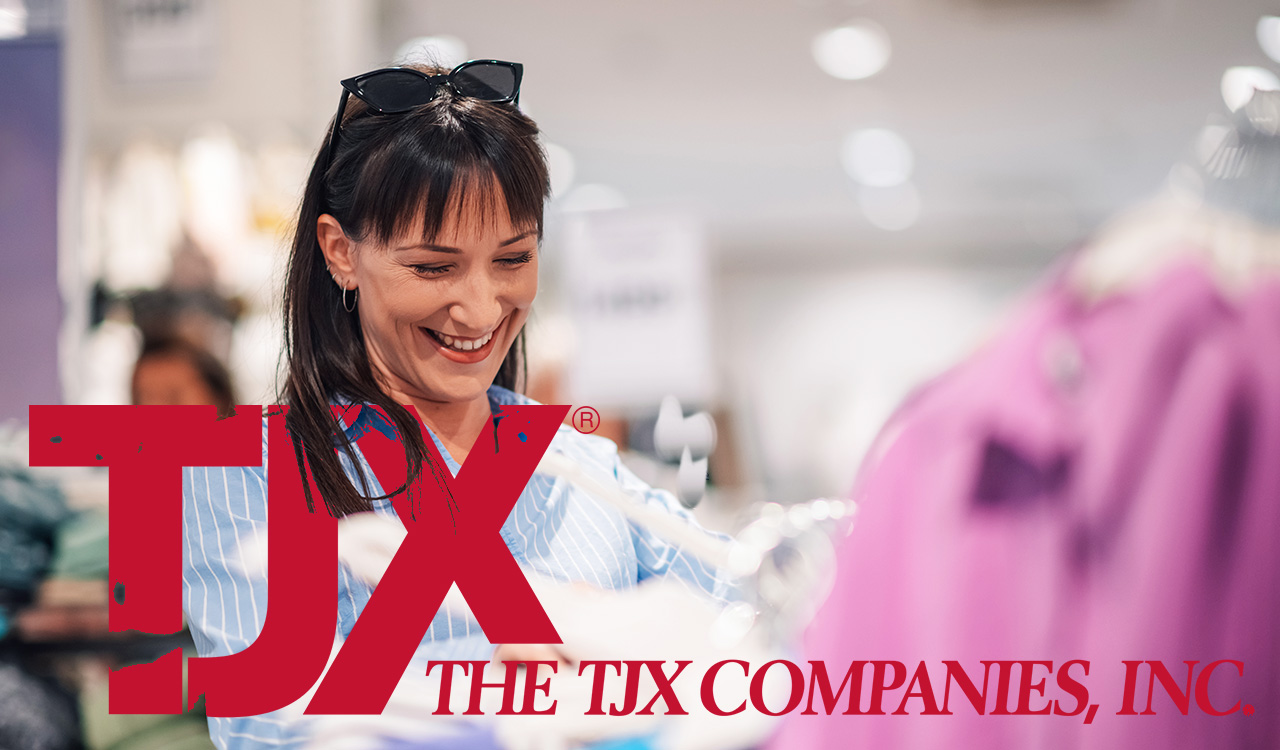Coming off of another incredible year in 2022 with total revenues of $48.5 billion, TJX clocked in at $54.2 billion in total revenues for 2023. TJX continues to add to its current 21,000 vendor list and 4,972 stores across nine countries, including TJ Maxx, Marshalls, HomeGoods, Homesense, and Sierra. Simply stated, they are adding 1300 new stores when many other retailers are caving.
There is no greater rush of the addictive brain chemical dopamine than the one unleashed when a loyal shopper pulls into the parking lot of one of the TJX Companies’ stores. The jolt of anticipation is not just about just one awesome experience in those stores. It’s about five expectations all within four walls.
Profitable and More Scalable
Q1 net sales in 2024, increased six percent to $12.5 billion. On the earnings call, CEO Ernie Herrman said, “We saw (consolidated) comp store sales growth of three percent, and every division was entirely driven by customer transactions, which underscores the strength of our value proposition. This also gives us confidence in our ability to gain market share across all our geographies. The second quarter is off to a good start, and we see numerous opportunities for our business for the balance of the year that we plan to pursue.”
Based on the above expected earnings across all nameplates, he said that Q2 was off to a “good start” and that he is “convinced that significant market share opportunities remain across the U.S., Canada, Europe, and Australia. We are confident that there will be plenty of quality branded merchandise available to us to support our growth plans.”
So, what does that tell you if you are among the “quality branded merchandise” cohort Herrman was referring to? And more to the point, what does “plenty” of it mean? Ironically it tells you one thing for sure: TJX is stealing bits of your market share. And it’s fueled by TJX’s mantra of “sell low” and “buy lower” (directly from the brands, of course).
Collateral Damage
Business Insider estimates that nine other legacy retail brands will be closing some 1,280 locations during 2024, including Macy’s, Express, Family Dollar and Foot Locker, as TJX envisions opening 1300 additional stores.
What’s worse for the so-called quality brands is that TJX “buys lower,” essentially to relieve the brand of excess inventory, and then sells it “lower” to consumers. Why would consumers ever pay the full markup price again?
And next gens are alert students of the “treasure hunt” experience. As word travels fast among this young cohort, TJX is in line to rapidly increase its share of these young consumers. Herrman expressed confidence about the company’s ability to keep its stores stocked, noting that its stores receive multiple deliveries each week, including thousands of new and fresh branded merchandise “to surprise and excite our customers.”
Alone in Its Field
The TJX business model is not easily copied. In fact, one could make the case that the specific differentiators and advantages that have been crafted into its DNA cannot be duplicated, period. With the exception of smaller competitors Ross Stores and Burlington, 2023 revenues $20.4 and $9.7 billion respectively, TJX can be described as owning the off-price space.
Hey, you guys in the other sectors, in the middle of an overstored, intensely competitive retail environment with omnipotent tech-armed consumers driving you into the insanity of the retail share wars and “race to the bottom” pricing, you can only dream about being in such a position.
Off-Price Retailers, A Magic Elixer
I have said this before, and you can check off the boxes once again. There is no greater rush of the addictive brain chemical dopamine than the one unleashed when a loyal shopper pulls into the parking lot of one of the TJX Companies’ stores. The jolt of anticipation is not just about just one awesome experience in those stores. It’s about five expectations all within four walls. And baked into the entire process is the sell low and buy lower mindset at TJX that has made their loyalists into “cult-like” status.
- It’s about a “treasure hunt.”
- It’s about affordable luxury brands (the largest purveyor of upscale brands in the world).
- It’s about fast fashion.
- It’s about localization.
- And all lumped together, it’s about the best value you can find anywhere.
eCommerce Strategy
In 2015, I referred to the “elephant in their room.” They acquired off-price internet retailer, Sierra Trading Post, and launched tjmaxx.com in 2013. In my opinion, they were testing the space, particularly to learn if there was any real synergy to gain additional growth with an omnichannel model. Accordingly, they proceeded with caution, continuing to focus on managing their phenomenal brick-and-mortar growth.
On a call with investors, Herrman, said, “We have learned a lot from tjmaxx.com. We really believe it drives incremental store traffic. Our ecommerce businesses have another year of double-digit sales growth; tjmaxx.com added new categories and well over a thousand new brands.”
While ecommerce sales are growing in double digits, it still only accounts for a minimal one percent of TJX’s annual revenues. Accordingly, the online sales tally was $477.9 million in 2023.
The TJ Maxx and now Marshall’s online strategy is to highly differentiate the product mix from what they have in the stores. I believe that part of this decision is because some of the deals offered in the stores cannot be replicated online without alienating the brands that liquidate through this channel. Plus, the speed of merchandise delivery to the stores and quick sales would make online challenging. Herrman believes offering different merchandise will avoid cannibalization and they will not lose any store traffic. While they may not benefit from the BOPIS traffic and impulse purchasing when the customer comes to the store for pick-up, they will achieve a conversion lift in sales when the customer returns goods. So, they view the strategy as “complementary” between the physical and digital channels.
A Final Checkbox for Next Gens
Not only is TJX demographically democratic, but it also attracts next-gen customers like crazy and has focused on selecting more contemporary brands and styles, marketing through social media sites such as Facebook, Twitter, Pinterest, and Instagram.
Less than 15 percent of the merchandise in the store is from previous seasons, a particularly important feature for younger consumers. The company changed its marketing to emphasize details like this because it realized its old strategy was based on talking to existing customers, when it really wants to talk to and attract new ones. As a result, there is consumer transparency and price tags now say, “past season.”
To accommodate the more rapid turnover and constant flow of newness, TJX’s stores are easily adjusted. Since there are no walls delineating a branded or category segment, they are continually resetting the floor to showcase the rapid flow of new merchandise and brands. This also heightens the thrill of discovery and the hunt and provides a continually new shopping experience for consumers. The TJX Rewards credit card allows customers to accumulate points for expenditures that can be redeemed for reward dollars at TJX’s stores, further cementing its relationship with customers, and drawing them back into the store.
With the new digital strategy, next-gen consumers will be able to enjoy the treasure hunt wherever they may be and whenever they desire the experience. That’s the formula for retail success in our dynamic and unpredictable marketplace.




